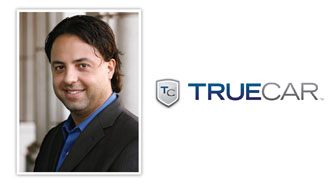Do Consumers Have Inflated Perspective of Dealer Profits?

Apparently, many shoppers don’t necessarily have an accurate perception on what kind of profit a dealer gains from a car sale, according to a survey from TrueCar. Apparently, the overwhelming majority of shoppers desire to know what others paid for vehicles they are considering, as well.
In fact, more than half (55 percent) of shoppers said they think that a dealer would make a profit of at least $4,000 by selling a $40,000 new vehicle. This sum would represent at least a 10-percent profit.
Respondents were also asked what they believed to be a fair profit on that $40,000 ride. More than half (53 percent) believed somewhere between $1,000 and $3,000 to be fair. The average response was $1,800, which represents a profit of 4.5 percent.
TrueCar noted that dealers typically make between 1 percent and 3 percent in profits for each new vehicle they sell. TrueCar also noted that transparency is the most important thing to car shoppers during the purchasing process.
"The goal of this study was to find out more about consumers’ mindset when it comes to buying a car," said Scott Painter, TrueCar’s founder and chief executive officer.
“What we’ve learned is consumers really want to feel they can trust the dealer to be fair. And the only way to achieve that is through transparency and up-front pricing,” he added.
Moving along, the study also discovered that close to nine in 10 shoppers (85 percent) feel that if they knew the transaction price on another similar deal in the last 30 days, it would be helpful.
Interestingly enough, the study also found that new-car shoppers put the most weight on price (78 percent) and trust (70 percent) when it’s time to pick a dealership. The store’s professional staff (9 percent) was the least important.
“We believe this study, which we plan to conduct annually, illuminates the way in which the market is headed and how cars must be sold in the future. We hope others in the automotive industry will see this data and understand what consumers desire and adjust business practices accordingly,” Painter added.
The site’s Online Automotive Buying Behavior Report was conducted by Synovate. To compile the report, Synovate polled 1,000 adult consumers in October.
Fuel Economy Trends
In other news from TrueCar, the company also shared some information regarding the fuel economies of vehicles that consumers are buying.
In light of rising fuel costs, it appears that consumers are buying more fuel-efficient rides.
The average fuel economy for a vehicle bought in February was projected to come in at roughly 22.2 miles per gallon, TrueCar found, up from 21.5 mpg in the year-ago period.
Breaking it down, the average mpg for a car was predicted at 25.8 mpg, up from 25.3 mpg in February 2009.
For trucks, the mpg was projected to climb from 18.8 to 19.5.
The biggest overall climber among the seven largest OEMs was predicted to be Ford, which moved from 18.9 to 20.4.
“Average monthly fuel economy provides a closer look into how fuel-efficient the vehicles a manufacturer sells each month,” said Jesse Toprak, TrueCar’s vice president of industry trends and insights. “It also provides a glimpse into how gas prices are shaping what cars are being sold monthly.”
The following tables provide some additional data regarding fuel-economy trends for February:
|
|
Average MPG
|
Average Car MPG
|
Average Truck MPG
|
||||||
|
Manufacturer
|
Feb-11
|
Feb-10
|
Change
|
Feb-11
|
Feb-10
|
Change
|
Feb-11
|
Feb-10
|
Change
|
|
Chrysler
|
19.5
|
18.8
|
0.7
|
22.4
|
20.6
|
1.8
|
18.7
|
18.1
|
0.6
|
|
Ford
|
20.4
|
18.9
|
1.5
|
24.8
|
23.8
|
1.0
|
18.6
|
17.5
|
1.1
|
|
GM
|
21.1
|
20.3
|
0.8
|
24.8
|
23.6
|
1.2
|
18.9
|
19.0
|
-0.1
|
|
Honda
|
24.6
|
24.2
|
0.4
|
28.2
|
26.9
|
1.3
|
21.6
|
20.8
|
0.8
|
|
Hyundai
|
26.6
|
25.3
|
1.3
|
28.3
|
27.2
|
1.1
|
24.0
|
22.6
|
1.4
|
|
Nissan
|
23.7
|
22.5
|
1.2
|
26.1
|
25.0
|
1.1
|
20.3
|
18.7
|
1.6
|
|
Toyota
|
23.8
|
24.8
|
-1.0
|
28.7
|
30.3
|
-1.6
|
19.7
|
19.4
|
0.3
|
|
Industry
|
22.2
|
21.5
|
0.7
|
25.8
|
25.3
|
0.5
|
19.5
|
18.8
|
0.7
|
Normal
0
false
false
false
EN-US
X-NONE
X-NONE
MicrosoftInternetExplorer4
/* Style Definitions */
table.MsoNormalTable
{mso-style-name:”Table Normal”;
mso-tstyle-rowband-size:0;
mso-tstyle-colband-size:0;
mso-style-noshow:yes;
mso-style-priority:99;
mso-style-qformat:yes;
mso-style-parent:””;
mso-padding-alt:0in 5.4pt 0in 5.4pt;
mso-para-margin:0in;
mso-para-margin-bottom:.0001pt;
mso-pagination:widow-orphan;
font-size:11.0pt;
font-family:”Calibri”,”sans-serif”;
mso-ascii-font-family:Calibri;
mso-ascii-theme-font:minor-latin;
mso-fareast-font-family:”Times New Roman”;
mso-fareast-theme-font:minor-fareast;
mso-hansi-font-family:Calibri;
mso-hansi-theme-font:minor-latin;
mso-bidi-font-family:”Times New Roman”;
mso-bidi-theme-font:minor-bidi;}
|
|
Average Small Car MPG |
Average Midsize Car MPG |
Average Large Truck MPG |
||||||
|
Manufacturer |
Feb-11 |
Feb-10 |
Change |
Feb-11 |
Feb-10 |
Change |
Feb-11 |
Feb-10 |
Change |
|
Chrysler |
24.6 |
21.9 |
2.7 |
24.8 |
24.4 |
0.4 |
16.4 |
15.9 |
0.5 |
|
Ford |
29.4 |
29.0 |
0.4 |
26.1 |
26.3 |
-0.2 |
16.2 |
16.5 |
-0.3 |
|
GM |
28.3 |
28.3 |
0 |
26.6 |
25.9 |
0.7 |
17.5 |
16.8 |
0.7 |
|
Honda |
30.8 |
30.9 |
-0.1 |
26.8 |
24.6 |
2.2 |
17.3 |
17.3 |
0 |
|
Hyundai |
29.5 |
28.0 |
1.5 |
27.9 |
26.9 |
1.0 |
N/A |
N/A |
N/A |
|
Mazda |
26.6 |
26.9 |
-0.3 |
24.5 |
24.4 |
0.1 |
N/A |
N/A |
N/A |
|
Mitsubishi |
26.4 |
25.1 |
1.3 |
25.1 |
25.0 |
0.1 |
N/A |
N/A |
N/A |
|
Nissan |
28.9 |
28.9 |
0 |
25.6 |
24.2 |
1.4 |
14.6 |
14.5 |
0.1 |
|
Subaru |
22.7 |
22.4 |
0.3 |
24.6 |
24.8 |
-0.2 |
N/A |
N/A |
N/A |
|
Suzuki |
N/A |
N/A |
N/A |
25.5 |
25.4 |
0.1 |
N/A |
N/A |
N/A |
|
Toyota |
33.6 |
34.7 |
-1.1 |
25.5 |
25.1 |
0.4 |
15.9 |
15.8 |
0.1 |
|
Volkswagen |
29.7 |
27.9 |
1.8 |
25.5 |
25.8 |
-0.3 |
N/A |
N/A |
N/A |
|
Industry |
29.6 |
29.8 |
-0.2 |
26.0 |
25.1 |
0.9 |
16.6 |
16.5 |
0.1 |

 View The Latest Edition
View The Latest Edition

